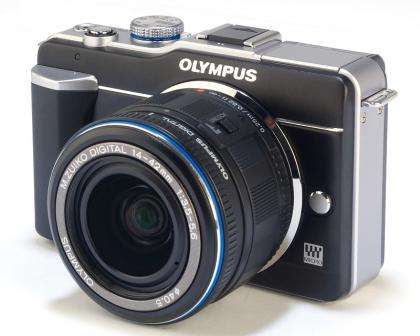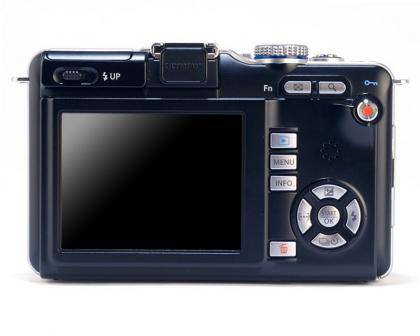Not everyone wants a digital SLR, but many do want more than a compact camera. Not only do they want to take higher quality photos, but they want the SLR's flexibility when it comes to changing lenses. What turns most novices off though is a DSLR's perceived bulk - it's no longer as easy to carry your camera everywhere you go.
When Olympus and Panasonic announced the Micro Four Thirds format in August 2008, nobody expected a new segment of interchangeable lens cameras to take off as quickly as it did; however, in December, these quasi-compact cameras accounted for 10 per cent of all interchangeable lens camera sales, according to market research firm Gfk.
This is largely thanks to the excellent cameras we've seen from both Olympus and Panasonic, which include the original Olympus E-P1 and Panasonic Lumix GF1 , but other manufacturers are starting to take note. Samsung and Sony, have both revealed their intentions to get into the same market.

Announced just eight months after the original E-P1, the E-PL1 is designed to complement the E-P1 rather than replace it. Olympus has designed it to be easier to use for novices. It has achieved this by overhauling the E-PL1's user interface with the new Live Guide, which replaces the oft unfamiliar camera terminology with more familiar terms. When the camera's in iAuto mode, pressing the Start/OK button activates Live Guide, where you're presented with six icons down the right hand edge of the screen. There's Change Colour Saturation, Change Colour Image, Change Brightness, Blur Background, Express Motions and finally Shooting Tips, which gives you advice on how to photograph certain subjects.

The new functions are quite powerful, but the names are a little confusing and you're also able to only control one at a time, thus limiting creativity. For example, in order to get the best photo of a flower, you might want to first blur the background (use a wide aperture) and then adjust the colour saturation to make the image more vibrant. You can't do this on the E-PL1 without venturing into the semi-automatic or manual exposure modes, but that's maybe something that could be added in a future model.
Unfortunately, the semi-automatic and manual modes also have limitations, as there's no control dial on the E-PL1. This is unlikely to please enthusiasts, but does make it more like a compact camera. In order to increase the aperture in aperture mode for instance, you need to press the 'up' button to switch the camera into aperture adjustment mode and then the 'up' or 'down' button to change the aperture. You can also change exposure compensation at the same time by using the 'left' and 'right' buttons.
This is a little cumbersome and is a step backwards. For novices who want to take more creative pictures, but have found themselves intimidated by jargon or complex controls, the simpler control system will be a boon until they try to get a little more creative and bump into Live Guide's limitations.











